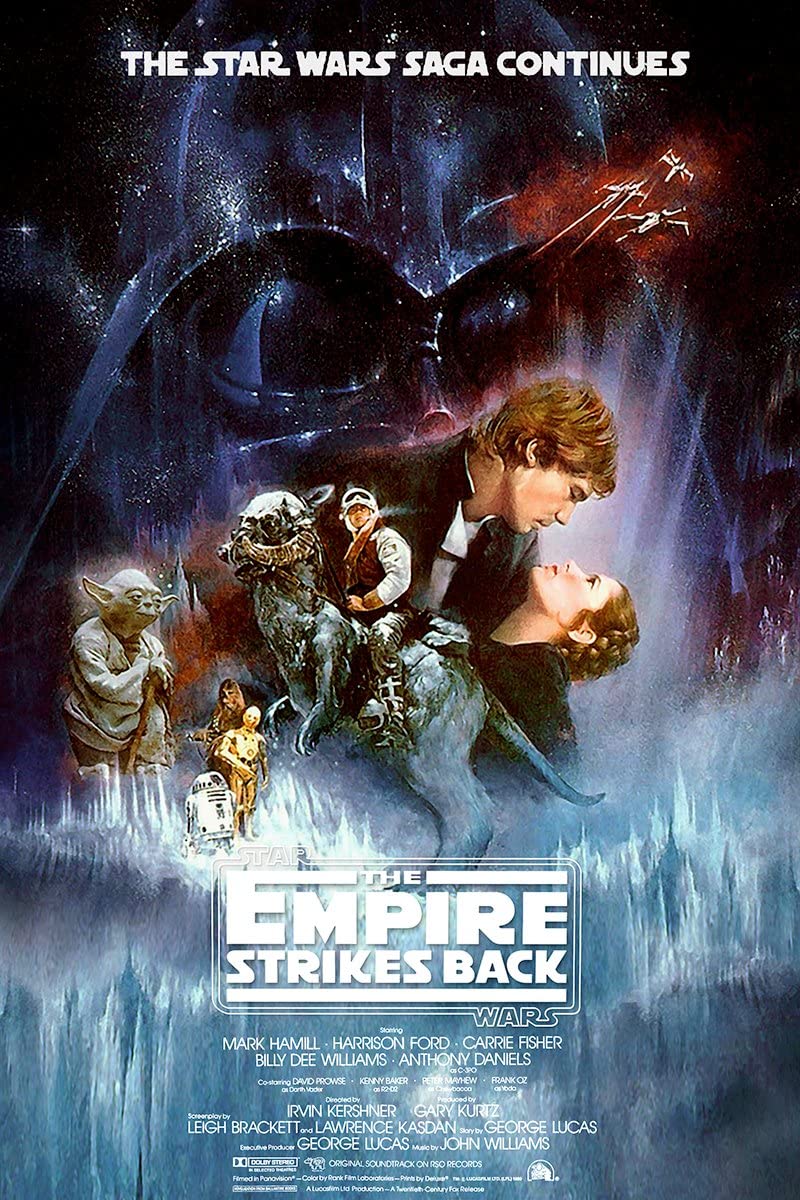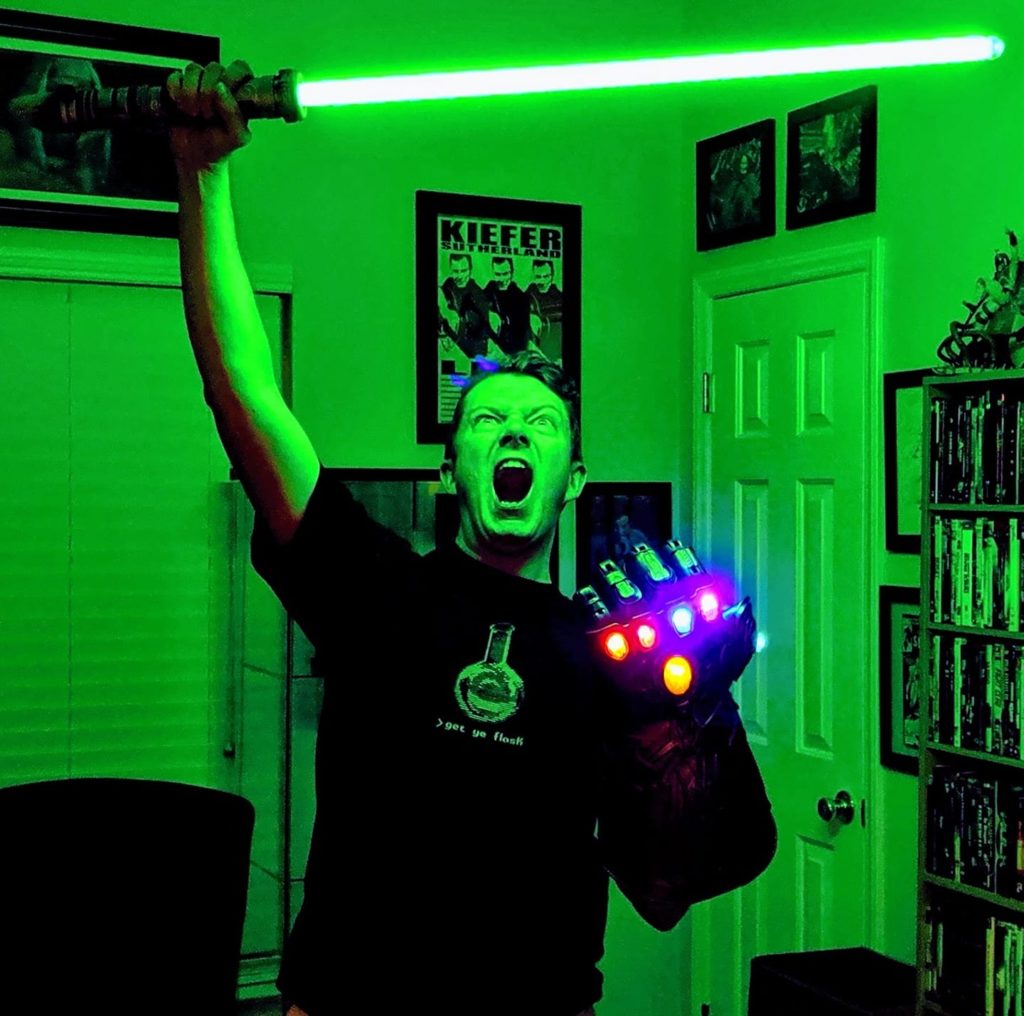
04 May Star Wars Episode V: The Empire Strikes Back
STAR WARS EPISODE V: THE EMPIRE STRIKES BACK
dir. George Lucas, starring Mark Hamill, Harrison Ford, Carrie Fisher, and Billy Dee Williams
Filmmaking has changed a lot in the last 40 years. So too has the way we consume films, and the way we discuss them.
It’s remarkable that, 42 years after its initial release, The Empire Strikes Back is still the gold standard of blockbuster sequels. It’s the sort of installment popular franchises are still chasing and audiences are always hoping for, regularly clocking in at the top of “Best of” lists that aren’t even Star Wars-specific.
And yet, I have to wonder. In a culture where pre-release expectations grow and mutate unchecked, websites both legitimate and WGTC-adjacent feed into the anticipation with reckless abandon, and the fanbase has the means (and passionate desire) to absolutely destroy a movie on social media the moment it fails to meet up to insurmountable hype, how would The Empire Strikes Back fare? If it were unleashed upon us today, would the culture embrace it and, more importantly, still hold it up as one of the greatest sequels of all time?
By the time The Empire Strikes Back was released, the general public was salivating for it. Not just fanboys, mind you…EVERYONE. Just take how hyped people get for new MCU releases now, apply it to 1980, and you’ve got a pretty close approximation of where the interest level was.
And yet, I wonder how many moviegoers sat there watching initial screenings of Empire and pondered just how different what they were seeing must have been from their expectations of what a Star Wars movie could be. If you entered that auditorium expecting something similar to A New Hope, large parts of this movie undoubtedly came as a shock.
And I’m not just talking about its conclusion, which gets a lot of credit for being one of the greatest downers in film history. The Rebels are defeated. Han Solo’s fate is uncertain. And Luke? We all know what happened there, even if you’ve somehow managed to avoid seeing the movie your entire life.
But what truly makes Empire the bold movie it is isn’t just where it leaves things; it’s how it gets there. Star Wars was a rollicking adventure that hurled moviegoers from one adventure scenario to the next. How crazy is it then that its sequel spends a great deal of time 1) isolating several of its main characters and 2) placing them in relatively quiet settings, be it the cavernous interior of an “asteroid cave,” the beautiful, sterile halls of Cloud City, or the swamps of Dagobah. The latter of which is especially significant, as it suddenly turns our laser-filled space adventure into a calming, zen character study.
Empire excels as a sequel specifically by not conforming to expectations. A New Hope set the stage, but Empire is where we learn just what a Star Wars movie can be.
Picking up a few years after A New Hope, Luke, Leia, Han, and their allies have now known each other just as long as we’ve known them, making it immediately delightful not just to see these old friends again but to see just how their dynamics have changed in the time we’ve been away. Perhaps we expect Luke and Han to be at-odds over their mutual attraction (can we blame them?) to Princess Leia, but instead of sinking into petty machismo the movie handles this in the best possible way, giving Luke a greater purpose and pulling him away on a mission that never tests his bond with Han.
If the best path to defeating an enemy is separating and isolating your foes, the Rebels never really stood a chance. Virtually all of the movie’s action plays out in lonely, hostile environments. The dangers and vast nothingness of Hoth is evident immediately. The Millennium Falcon, separated from the greater Rebel fleet, spends a great deal of time stranded in an asteroid field (and/or stomach). If there are any sentient life forms on Dagobah aside from Yoda, we’re never given a shred of evidence. Even Cloud City, where some of our heroes find an extremely brief respite, hovers about a gaseous planet with an inhospitable surface. It all creates a perfect mood of pervasive dread; and yet, because we saw A New Hope, we know our heroes will triumph, right? …RIGHT?
Not to say the movie doesn’t give us more overt signs that things might not always work themselves out for our heroes. Many of Yoda’s teachings focus on tempering Luke’s optimism and brash, adventuresome spirit. Luke learns that he must self-actualize to achieve his goals; that living up to his potential isn’t a guarantee unless he believes in what he’s truly capable of. He also learns perhaps the movie’s hardest lesson – sometimes success means sacrifice. Luke’s adventures in A New Hope were exciting and uplifting. Empire, meanwhile, says, “Now let me show you what real life is like.”
There’s no doubt that Empire remains a truly great sequel by doing what the best sequels do – taking everything that worked about the first movie and flipping it on its head. And this is exactly the reason I’d be willing to bet the movie would get absolutely obliterated online in today’s environment, and that’s assuming it was something a major studio like Disney would even be willing to take a chance on. Today, giving audiences what they expect is generally more valued than challenging them.
Review by Brian Martin


No Comments